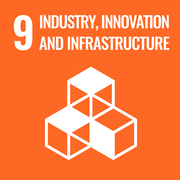
Growing vegetables in space: possible even in the absence of light
Among the main challenges in growing vegetables in space, one of the most significant is the limited availability of energy resources, especially light, which is crucial for the growth and proper development of plants.
Finding micro vegetable varieties that can be cultivated in extreme environmental contexts, such as space missions, is an ideal solution, especially for supplying astronauts with fresh food during their travels and stay in space.
A study, published in the journal ‘Plant Communications’ and coordinated by researchers Raffaele Dello Ioio and Paola Vittorioso of Sapienza’s Department of Biology and Biotechnology, in collaboration with the Institute of Experimental Botany, the Italian Space Agency and the Department of Biology of the University of Pisa, made it possible to isolate microgreens capable of germinating in the dark by identifying a molecular mechanism that promotes their growth independently of light.
The research focused on Cardamine hirsuta, more commonly known as bitter hairy cress, a model plant with micro-vegetable characteristics.
Researchers demonstrated that Cardamine is capable of germinating independently of light and that it owes this ability to high levels of Gibberellic Acid (GA), a hormone present in all plants and responsible for their growth, and the regulator DAG1, which is involved in the process independently of light conditions.
The results will make it possible to transfer this knowledge to other microgreens via TEA technology (assisted evolution techniques), increasing the number of plant products available to astronauts and bringing the colonisation of other planets closer.
Thanks to the joint venture of Paola Vittorioso and Raffaele Dello Ioio's group, funded by the Lazio region, it will also be possible to explore new perspectives for the development of more resilient crops that can adapt to increasingly complex environmental contexts due to climate change.
‘Today, environmental issues involve society in all its components,' says Dello Ioio, ’making it necessary to develop alternative strategies to make crops sustainable and adaptable to new climatic conditions. The generation of plants of agronomic interest whose seeds are capable of germinating under sub-optimal conditions would therefore represent an important milestone for the generation of crops tolerant to environmental changes'.
References:
Andrea Lepri, Hira Kazmi, Gaia Bertolotti, Chiara Longo, Sara Occhigrossi, Luca Quattrocchi, Mirko De Vivo, Daria Scintu, Noemi Svolacchia, Danuse Tarkowska, Veronika Tureckova, Miroslav Strnad, Marta Del Bianco, Riccardo di Mambro, Paolo Costantino, Sabrina Sabatini, Raffaele Dello Ioio, Paola Vittorioso, doi: https://www.cell.com/plant-communications/fulltext/S2590-3462(25)00024-0
Further Information:
Raffaele Dello Ioio
Department of Biology and Biotechnology Charles Darwin
raffaele.delloioio@uniroma1.it
Paola Vittorioso
Department of Biology and Biotechnology Charles Darwin
